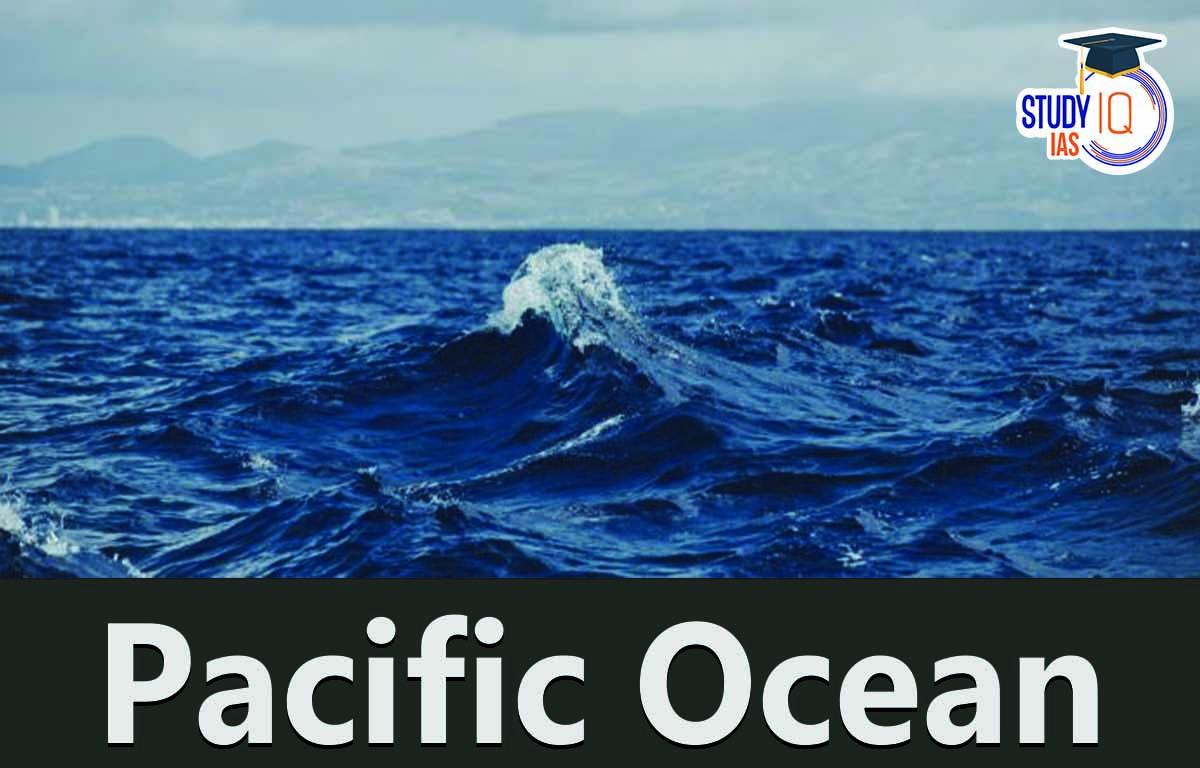Table of Contents
Pacific Ocean
The Pacific Ocean is in both the western and southern hemispheres and is the largest ocean in the world, covering about 329 million square kilometers. It is bordered by Asia to the west and the Americas to the east. The Pacific Ocean holds more than half of all the water on Earth. Both warm and cold currents flow through the ocean. These currents are influenced by two large tectonic plates: the Pacific Plate, which moves northwest toward South America, and the North American Plate, which moves southwest toward Asia. This movement creates areas with both high and low temperatures.
The ocean has three main sections: the East China Sea, the South China Sea, and the Indian Ocean. These regions are separated by a narrow area called the Bering Strait.
| Pacific Ocean |
|
Pacific Ocean Feature
The Mariana Trench is the deepest point on Earth located near the Mariana Islands. It is 11034m deep which is much deeper than Mount Everest. Most of the Pacific Ocean is under a large piece of the Earth’s crust called the Pacific Plate. A plate is a hard part of the Earth’s surface that moves slowly. There are many other plates around the Pacific Plate. When these plates collide into each other, they cause earthquakes and volcanoes. The line of volcanoes around the Pacific Ocean is called the “ring of fire.”
North Pacific Ocean
The region of the Pacific Ocean basin north of the equator known as the North Pacific. It extends northward to the Arctic area, from the Eastern coastlines of Asia to the Western coasts of North and South America (until the Equator).
South Pacific Ocean
The South Pacific, the largest marine division on Earth and home to numerous islands and archipelagos, is located in the Southern Hemisphere. It covers a large area of Maritime Southeast Asia and Oceania, which includes Melanesia, Micronesia, and Polynesia.
Pacific Ocean Depth
The Pacific Ocean has a mean depth of 4280 metres and a maximum known depth of 11,034 metre in the Mariana Trench, which is also the deepest ocean in the world.
Pacific Ocean Ring of Fire
The Ring of Fire covers about 40,000 kilometers and includes several tectonic plates, like the Pacific, Juan de Fuca, Cocos, Indian-Australian, Nazca, North American, and Philippine Plates.
This area runs along the western coasts of North and South America goes through the Aleutian Islands in Alaska, continues down the eastern coast of Asia, reaches New Zealand, and extends to the northern coast of Antarctica. Some important places in the Ring of Fire include Bolivia, Chile, Ecuador, Peru, Costa Rica, Guatemala, Mexico, the United States, Canada, Russia, Japan, the Philippines, Australia, Papua New Guinea, Indonesia, New Zealand, and Antarctica.
Islands in Pacific Ocean
About 25000 islands can be found in the Pacific Ocean. Three major groups of islands located entirely in the Pacific Ocean can be distinguished: Micronesia, Melanesia, and Polynesia.
| Name | Region | Sub-region |
| New Guinea | Oceania | Melanesia |
| Honshu | Asia | East Asia |
| Sulawesi | Asia | Southeast Asia |
| South Island | Oceania | Australasia / Polynesia |
| North Island | Oceania | Australasia / Polynesia |
| Luzon | Asia | Southeast Asia |
| Mindanao | Asia | Southeast Asia |
| Tasmania | Oceania | Australasia |
| Hokkaido | Asia | East Asia |
| Sakhalin | Asia | North Asia |
| Taiwan Island (Formosa) | Asia | East Asia |
| Kyushu | Asia | East Asia |
| New Britain | Oceania | Melanesia |
| Vancouver Island | North America | Northern America |
| Shikoku | Asia | East Asia |
| Grande Terre | Oceania | Melanesia |
| Palawan | Asia | Southeast Asia |
| Hawaii | Oceania | Polynesia |
| Viti Levu | Oceania | Melanesia |
Countries in Pacific Ocean
Australia, Fiji, Japan, Kiribati, Marshall Islands, Micronesia, Nauru, New Zealand, Palau, Papua New Guinea, Philippines, Samoa, Solomon Islands, Republic of China (Taiwan), Tonga, Tuvalu, and Vanuatu are among the seventeen independent states that make up the Pacific region.
Pacific Ocean Deepest Point
The southern end of the Mariana Trench, which extends several hundred kilometres southwest of the U.S.-owned island of Guam, contains the deepest portion of the ocean, known as the Challenger Deep, which lies beneath the western Pacific Ocean. The approximate depth of Challenger Deep is 10,935 meters (35,876 ft).
Mariana Trench in Pacific Ocean
The Mariana Trench, also known as the Marianas Trench, is the deepest oceanic trench on Earth and is situated in the western Pacific Ocean about 200 kilometres east of the Mariana Islands. It has a crescent form and a length and width of roughly 2,550 km and 69 km, respectively.
Other Indian Geography Topics
Other Fundamental Geography Topics


 Desert Climate, Distribution, Climatic C...
Desert Climate, Distribution, Climatic C...
 Deserts of India Map, Features of Thar D...
Deserts of India Map, Features of Thar D...
 Indus Valley Civilization, History, Phas...
Indus Valley Civilization, History, Phas...





















